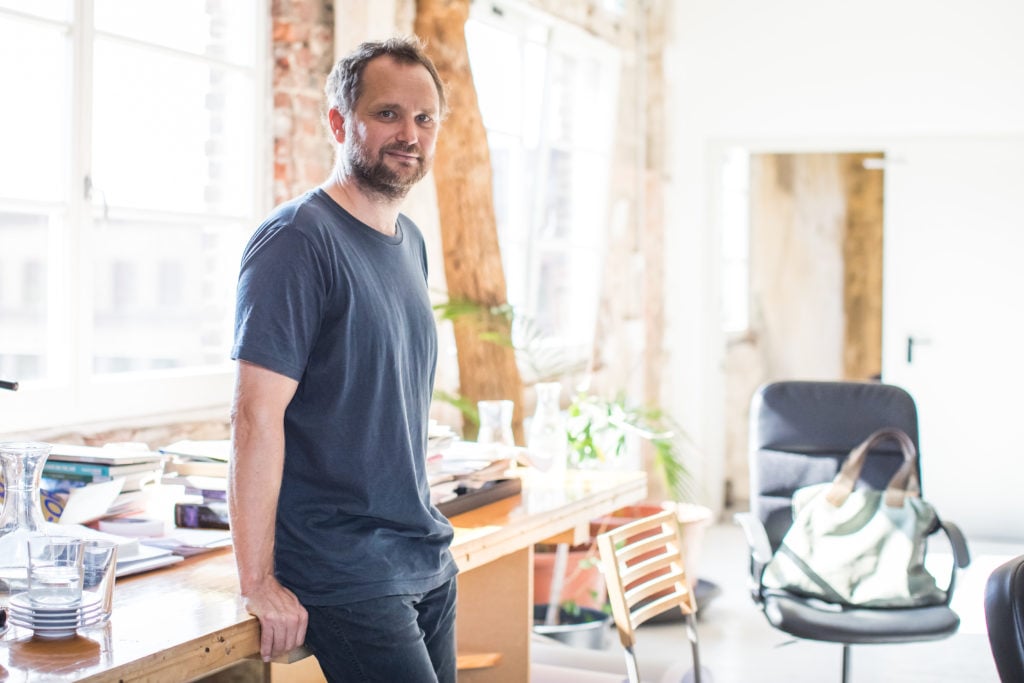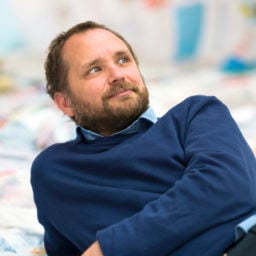They say that roughly a fifth of Miami will be underwater in 25 years, and the whole city could be submerged by the end of the century. It’s a looming climate threat, the effects of which can already be felt in day-to-day life in the Magic City.
It makes the upcoming project of Tomás Saraceno for Aerocene at Art Basel Miami Beach—a kinetic, immersive installation called Albedo—particularly salient.
Working with Aerocene, the creative open-source initiative Saraceno founded in 2015 with the aim of “achieving an ethical collaboration with the atmosphere and the environment,” the artist has installed 40 upturned umbrellas on the Miami Beach oceanfront between 21st and 22nd Street. The structure will harness solar energy to power one of the signature Aerocene Explorer sculptures—a tethered, kite-like object, which will be lifted and suspended in mid-air without fossil fuels.
What’s more, the installation is interactive: Every day, between noon and 4 pm, visitors will be encouraged to borrow one of the Explorers (in the form of a backpack) and investigate its potential on their own.
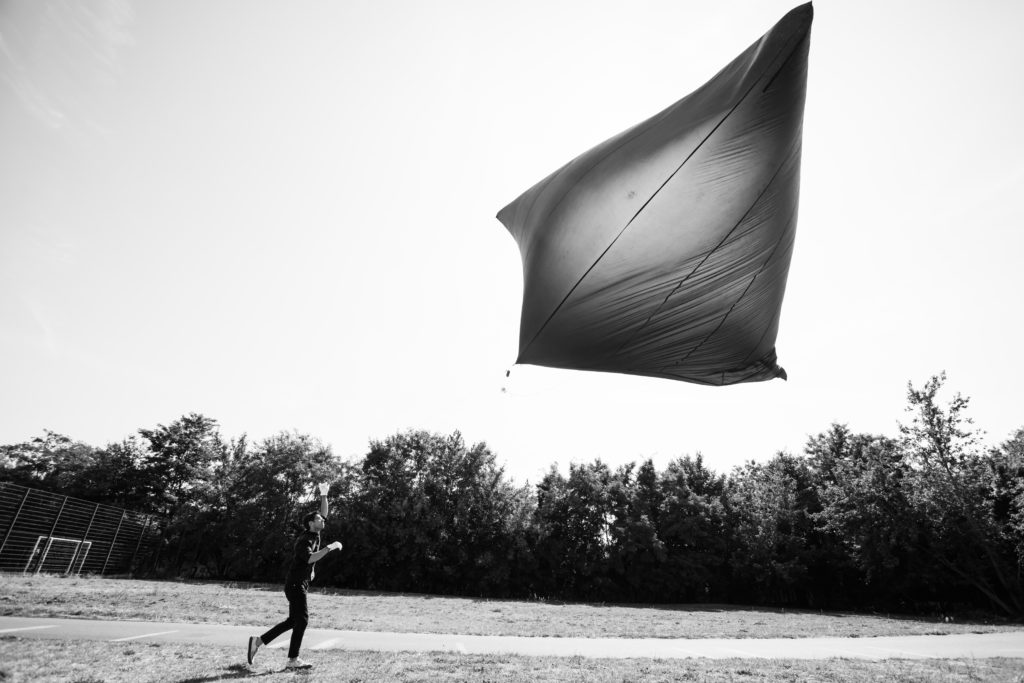
A view of the Aerocene Explorer sculpture from below. Courtesy of the artist, the Aerocene Foundation, and Audemars Piguet.
The project, named after the scientific term for how much light is reflected from a surface rather than being absorbed (from the Latin word “albedo,” which translates to “whiteness”), was inspired by the phenomenon of reflectivity, as well as “how the sun has made us, and what it could make of us if we learn how to sense it differently,” the Argentinian-born, Berlin-based artist said.
“The act of raising Albedo towards the sun is one of shared responsibility,” Saraceno told artnet News. “We join the Earth’s surface albedo in reflecting light, recasting the sun’s energy back to the cosmic expanse, helping to cool the Earth. It is a gesture of collective protective care towards the energetic balance of our atmosphere.”
The installation will also, essentially, create a giant sundial on the sands of Miami Beach—which is appropriate given that the company sponsoring the project is the elite watchmaker Audemars Piguet.
“We both have a deep relationship to time,” Saraceno said of himself and the Swiss company, “although we approach the question of time from different perspectives. Watches are about being very precise, measuring time specifically for the benefit of humans. Our project is about the larger universe, so we think of time on a cosmic scale.”
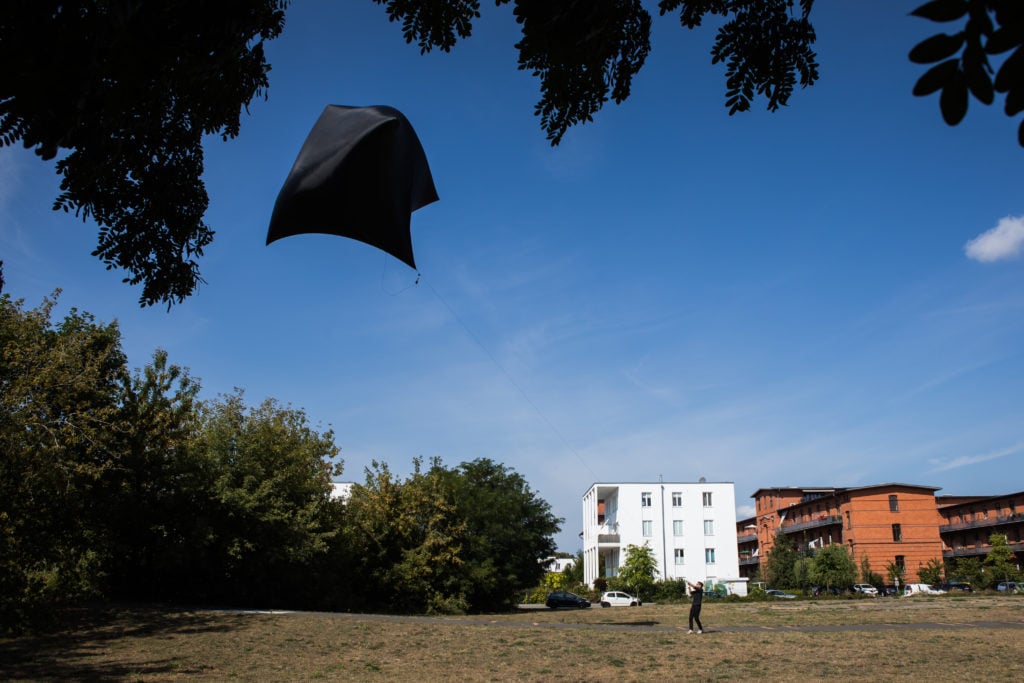
A view of the Aerocene Explorer sculpture from below. Courtesy of the artist, the Aerocene Foundation, and Audemars Piguet.
“I am constantly thinking about deep time,” he continued, “the time that structures the evolution of our planet and the universe. When you think about the Anthropocene, you begin to align yourself with deep planetary rhythms. Perhaps one day we could design, together with Audemars Piguet, watches that could display the optimal moments for an Aerocene sculpture to get off the ground, the perfect time to float!”
The project has a lot in common with other artistic projects recently commissioned by Audemars Piguet. Like Lars Jan’s project Slow-Moving Luminaries at Art Basel Miami Beach last year and Semiconductor’s HALO in Basel this summer, Saraceno’s project is interactive, scientific in nature, and, perhaps most importantly, heavily concerned with environmental issues.
These projects complement the work of the Audemars Piguet Foundation, a nonprofit branch of the company that has been behind many environmental education and protection efforts since it was founded in 1992.
“Our objective in presenting these ideologies is to express our heritage and commitment to creativity, passionate craftsmanship, innovation, and environmentalism,” says Olivier Audemars, the vice-chairman of the company’s Board of Directors. “We feel there are striking parallels between our work over the past 25-plus years and what is being presented in Albedo.”
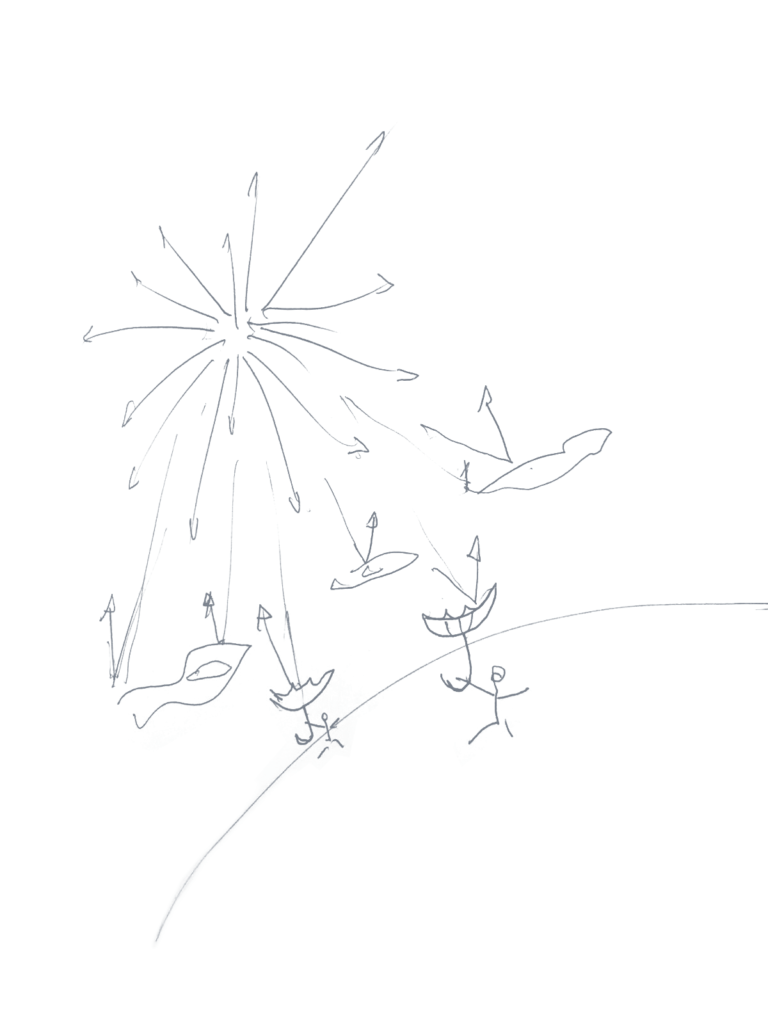
Sketches for the Aerocene Albedo, 2018. Courtesy the Aerocene Foundation. Foundation licensed under the open source Creative Commons CC BY-SA 4.0.
In addition to driving the Aerocene Explorer, Saraceno’s hemispherical umbrella installation will also use solar energy to cook free meals for the public daily. The group meals, co-organized with local event hall the Wynwood Yard, will feature a menu of famous Florida dishes made from local and sustainable ingredients.
The project’s emphasis on community-based activity was particularly important for Saraceno, and his vision for Aerocene itself.
“In the articulation of this common, shared space, a medium for action became possible and we experience continuously how art can help us to imagine and foster a conversation towards sustainable futures,” he said. “The Aerocene Albedo can be seen as a temporal reminder of a possible huge failure for every discipline if we do not find a way to understand what our relationship to the Anthropocene is, who we are, where we come from and what is our responsibility. After all, no individual has the tools to solve these problems, we need to work together to create a new story—to go from competition to cooperation.”
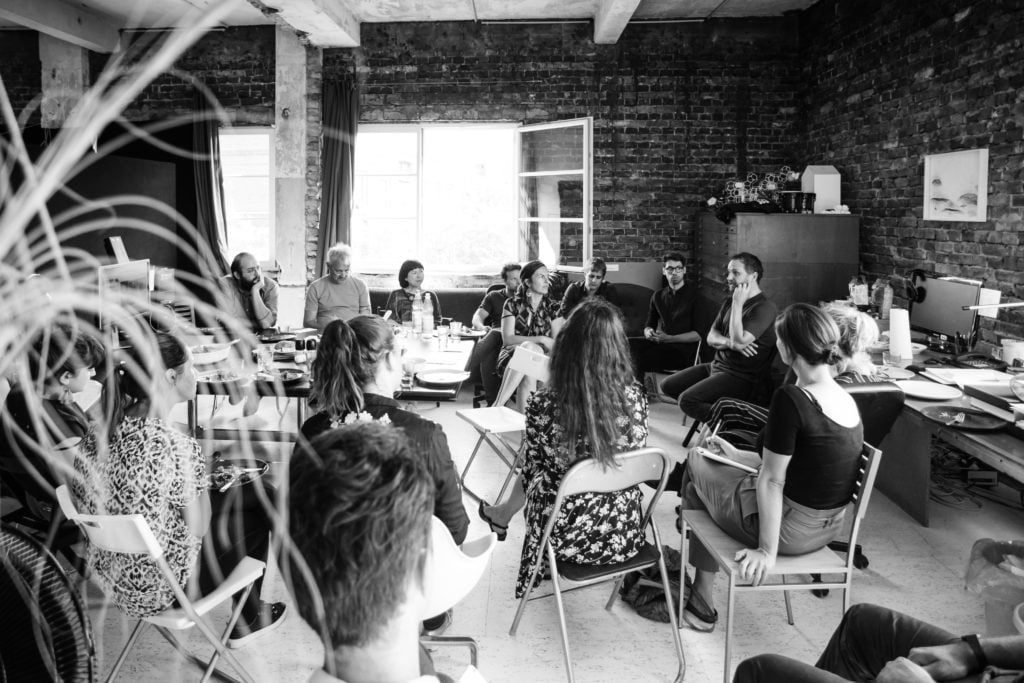
Tomás Saraceno with Aerocene collaborators, 2018. Courtesy of the artist, the Aerocene Foundation, and Audemars Piguet.
Tomás Saraceno’s “Albedo” will be on view from December 5 through December 9, 2018, at Art Basel Miami Beach.
Follow Artnet News on Facebook:
Want to stay ahead of the art world? Subscribe to our newsletter to get the breaking news, eye-opening interviews, and incisive critical takes that drive the conversation forward.
